Disability Alphabet
ink and pencil on paper (series of 26 drawings)
The Disability Alphabet is a collection of twenty-six black and white drawings aimed at bringing awareness to the disabled experience. Each letter relates to its own aspect of disability.
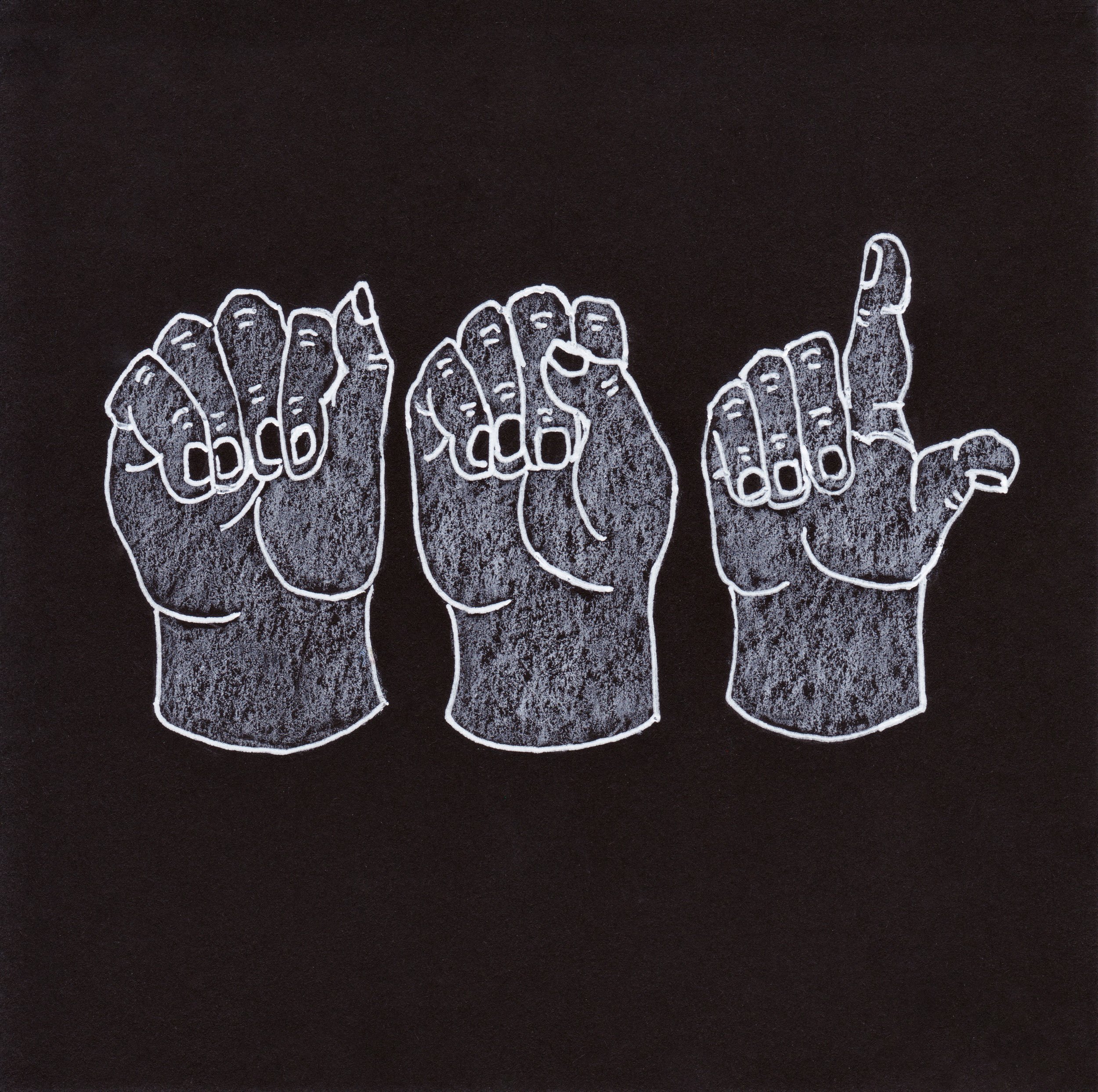
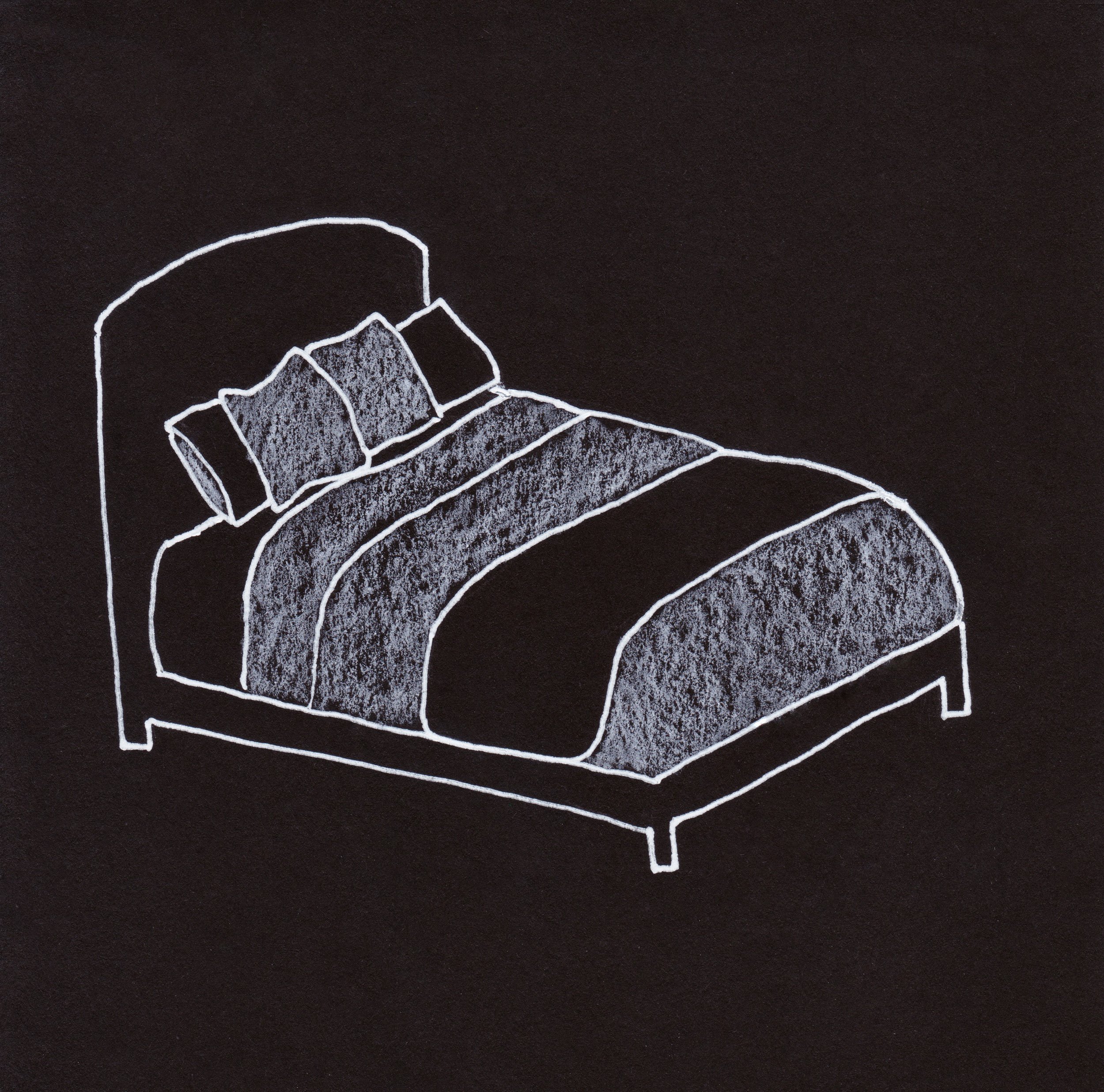
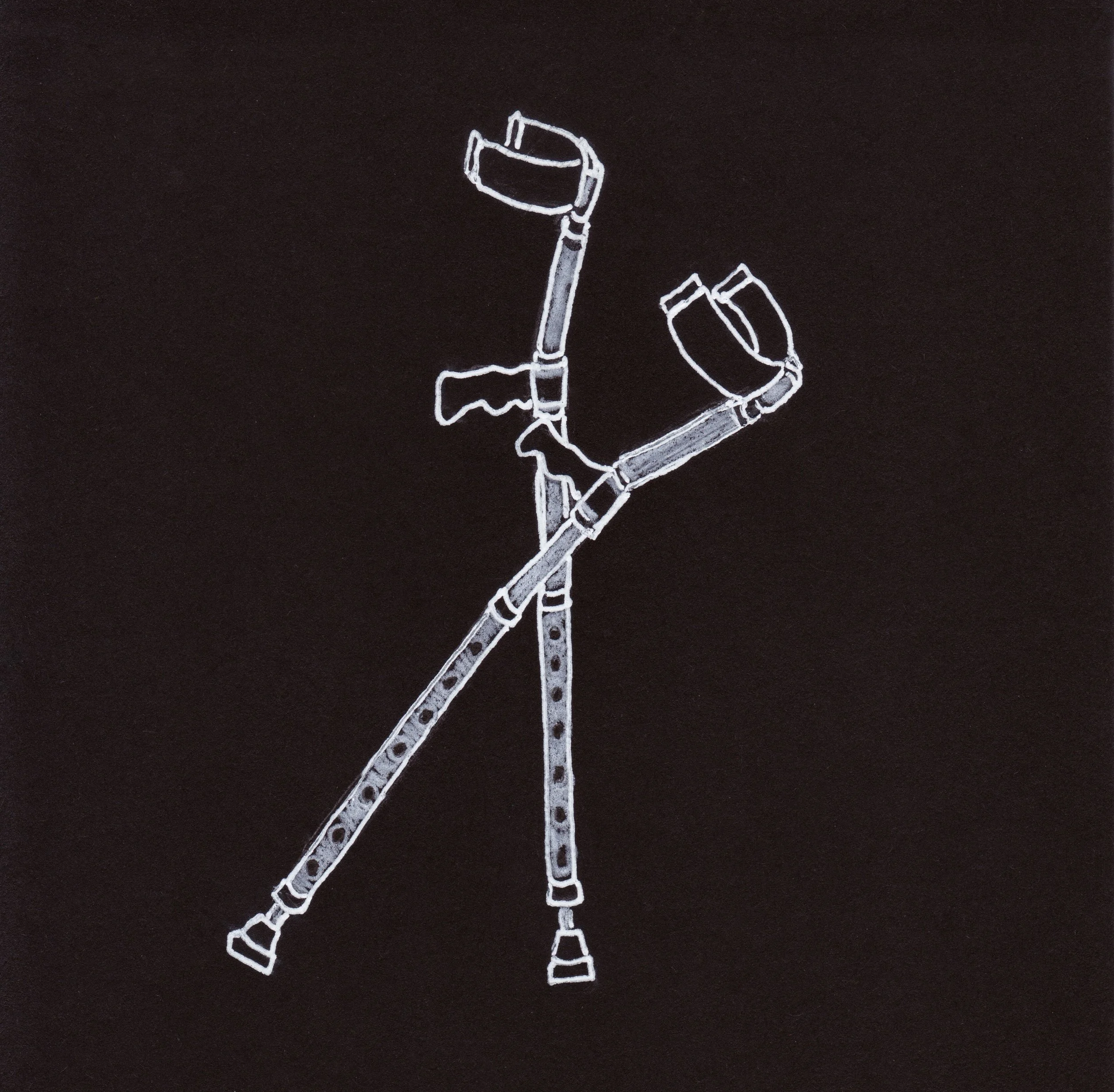
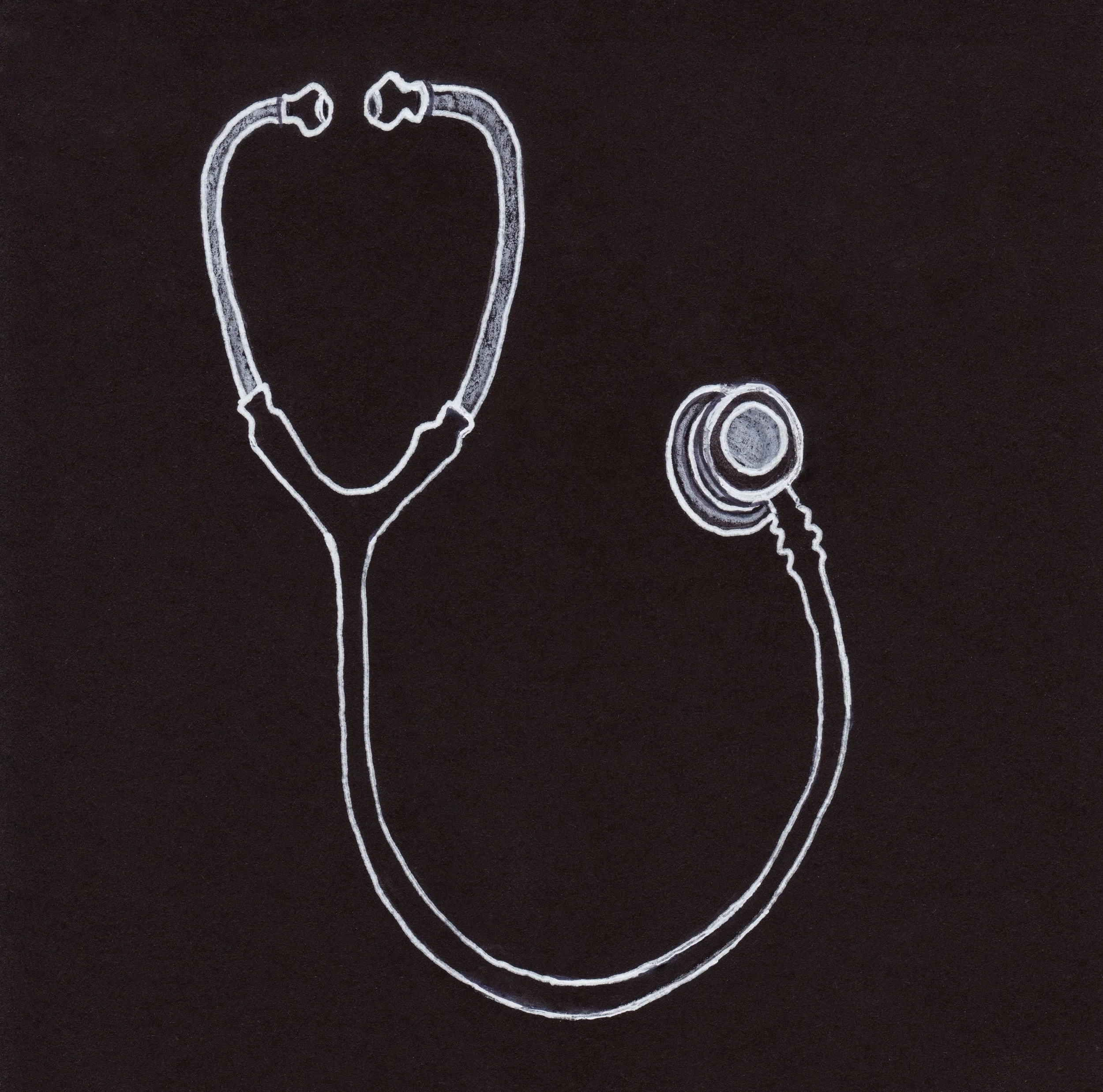
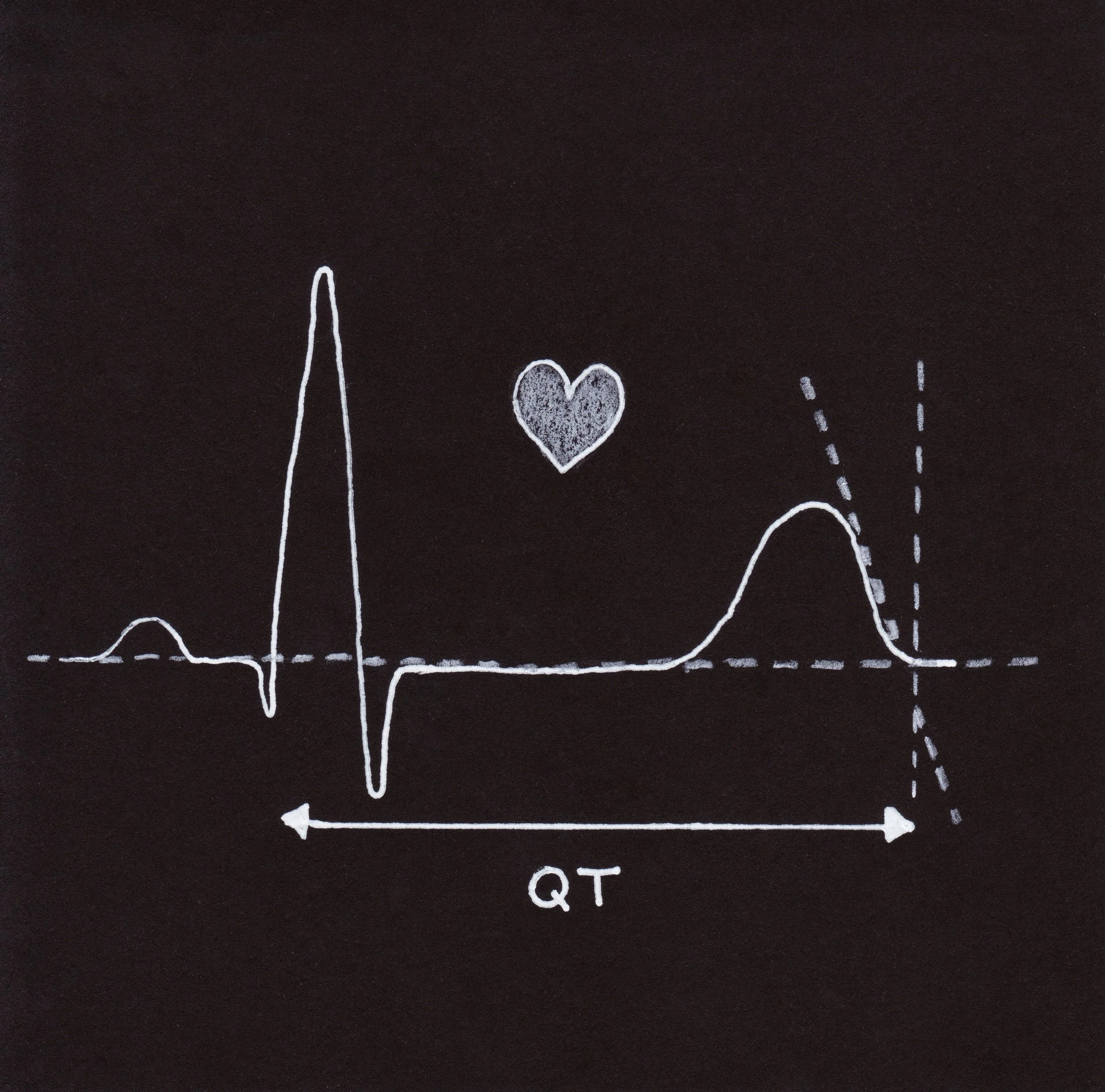
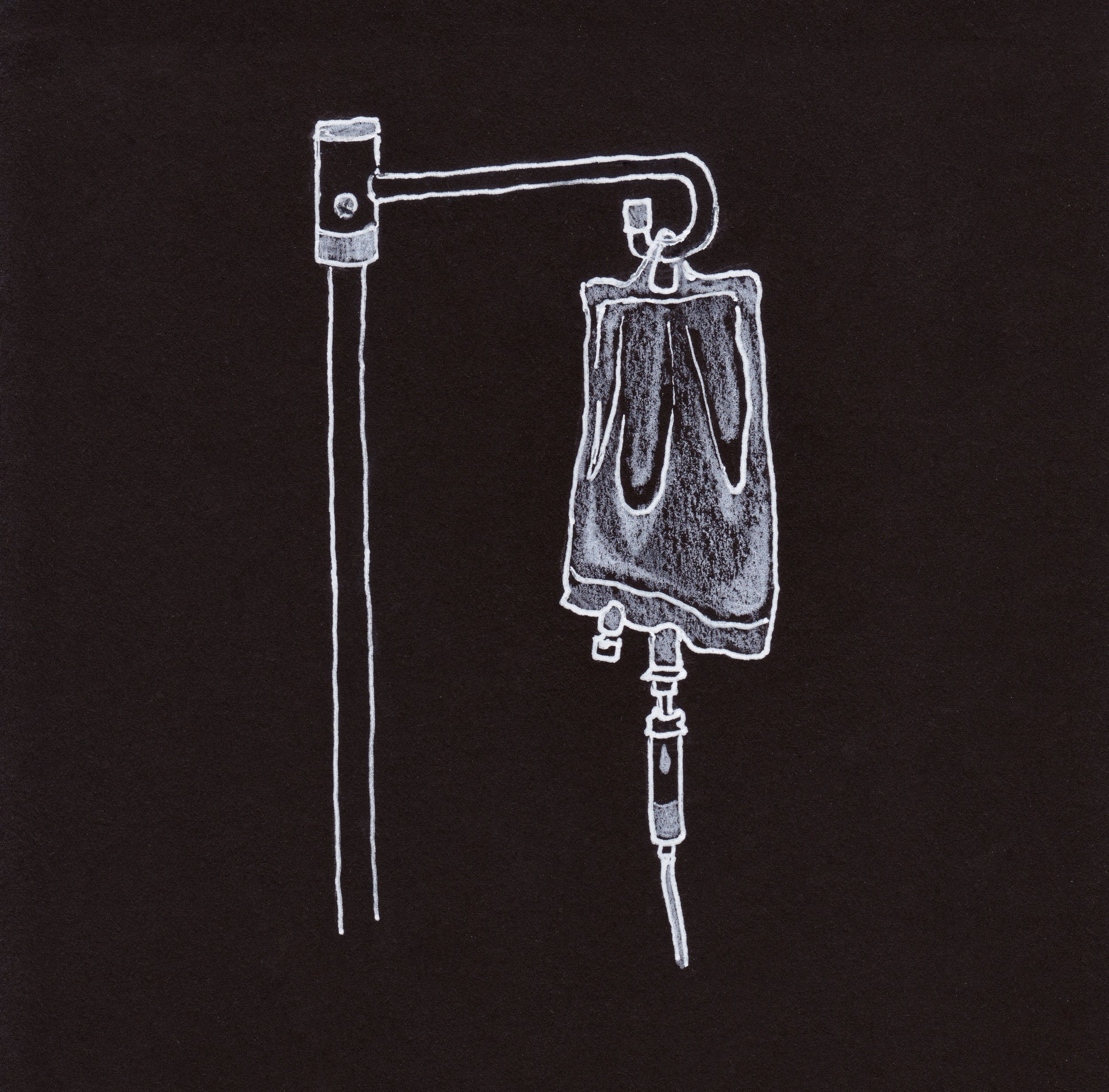
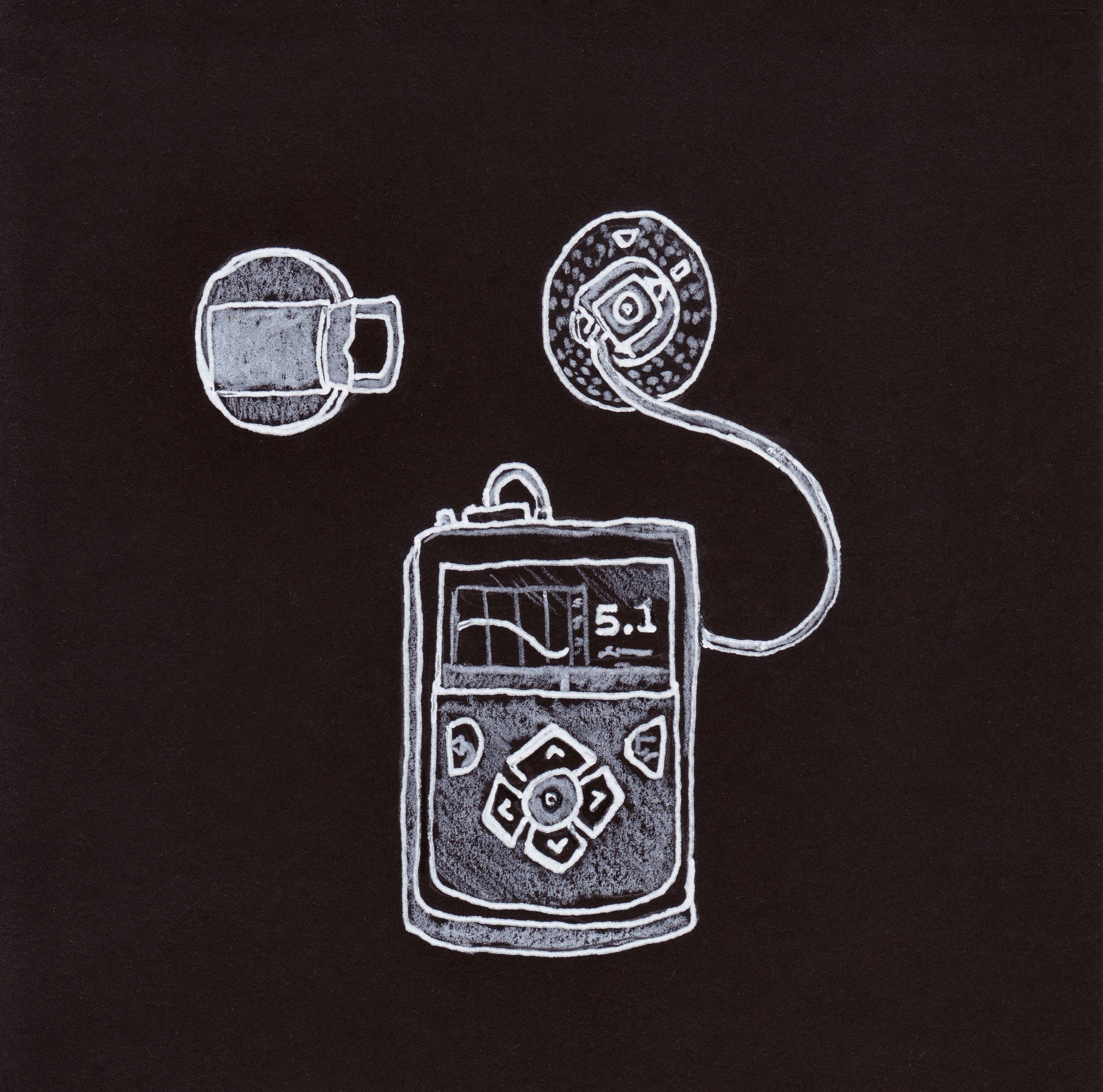

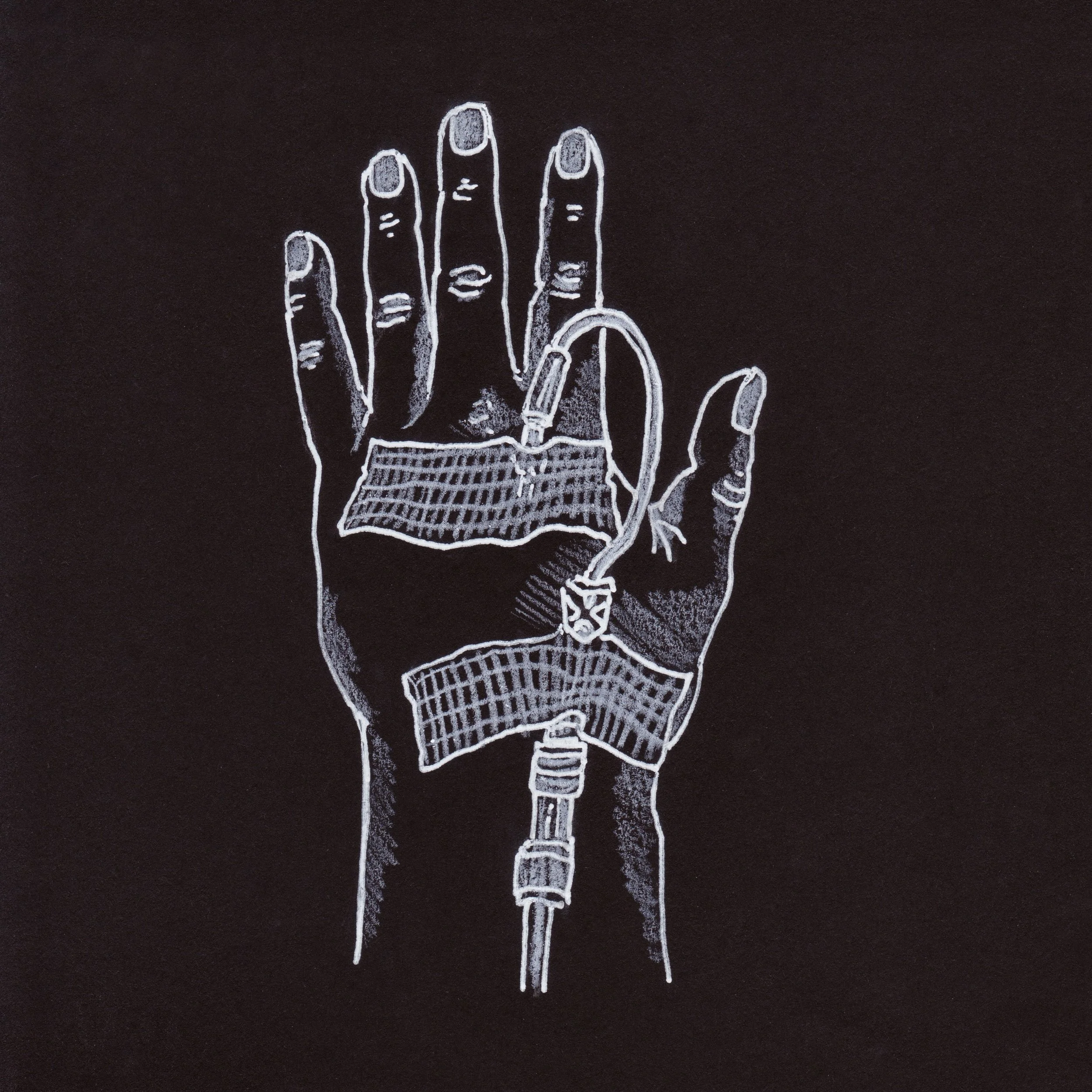
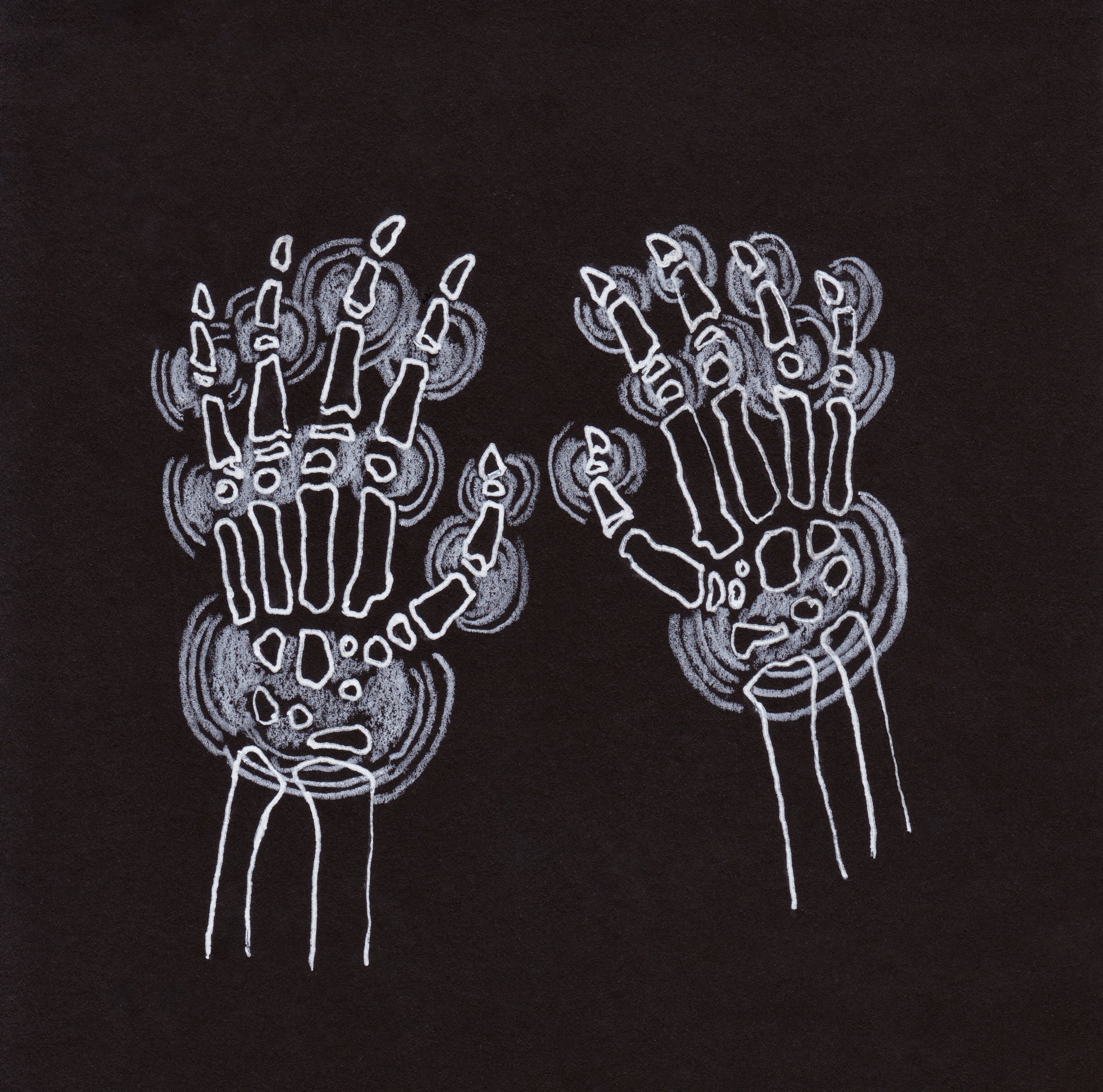
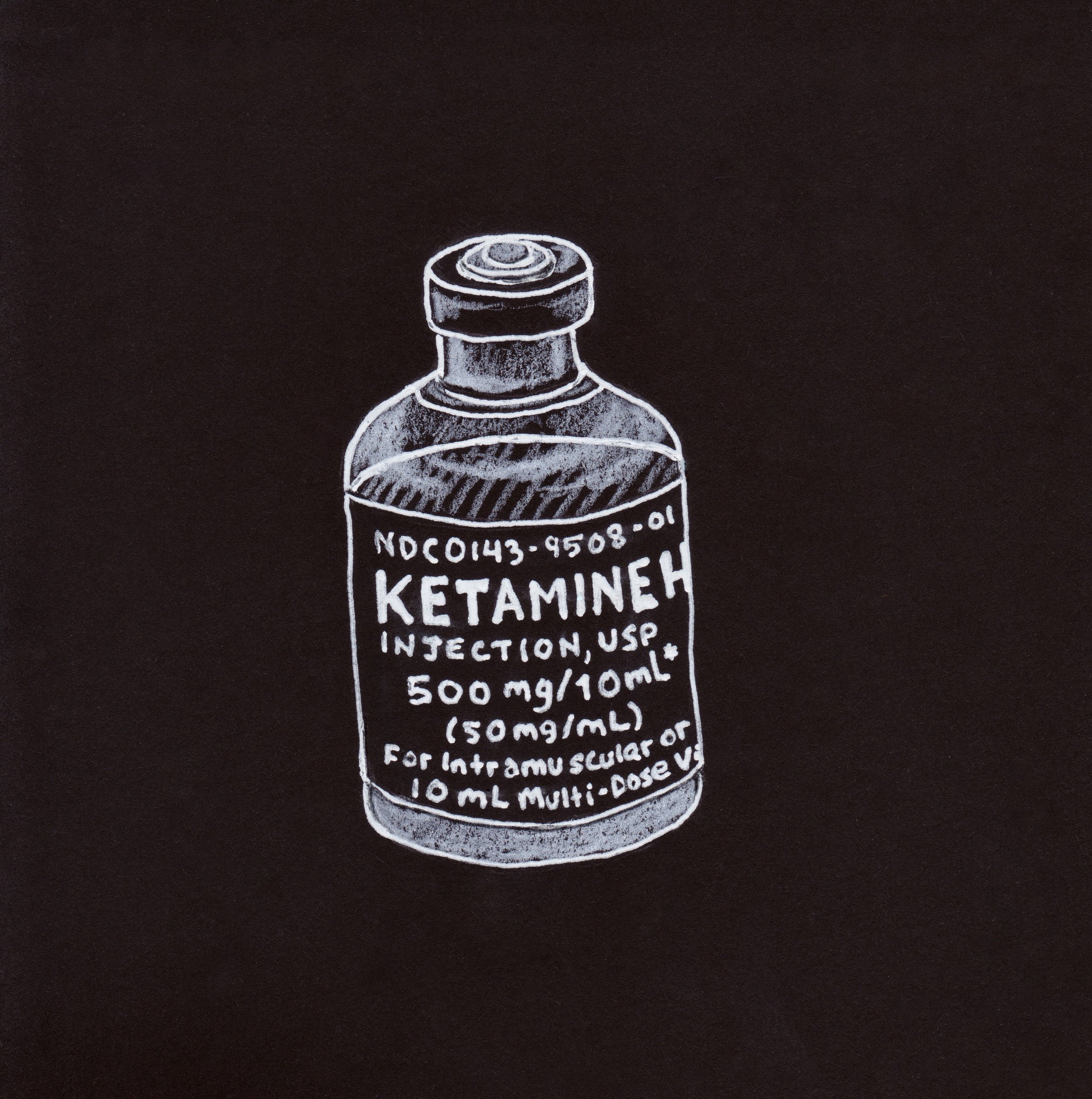

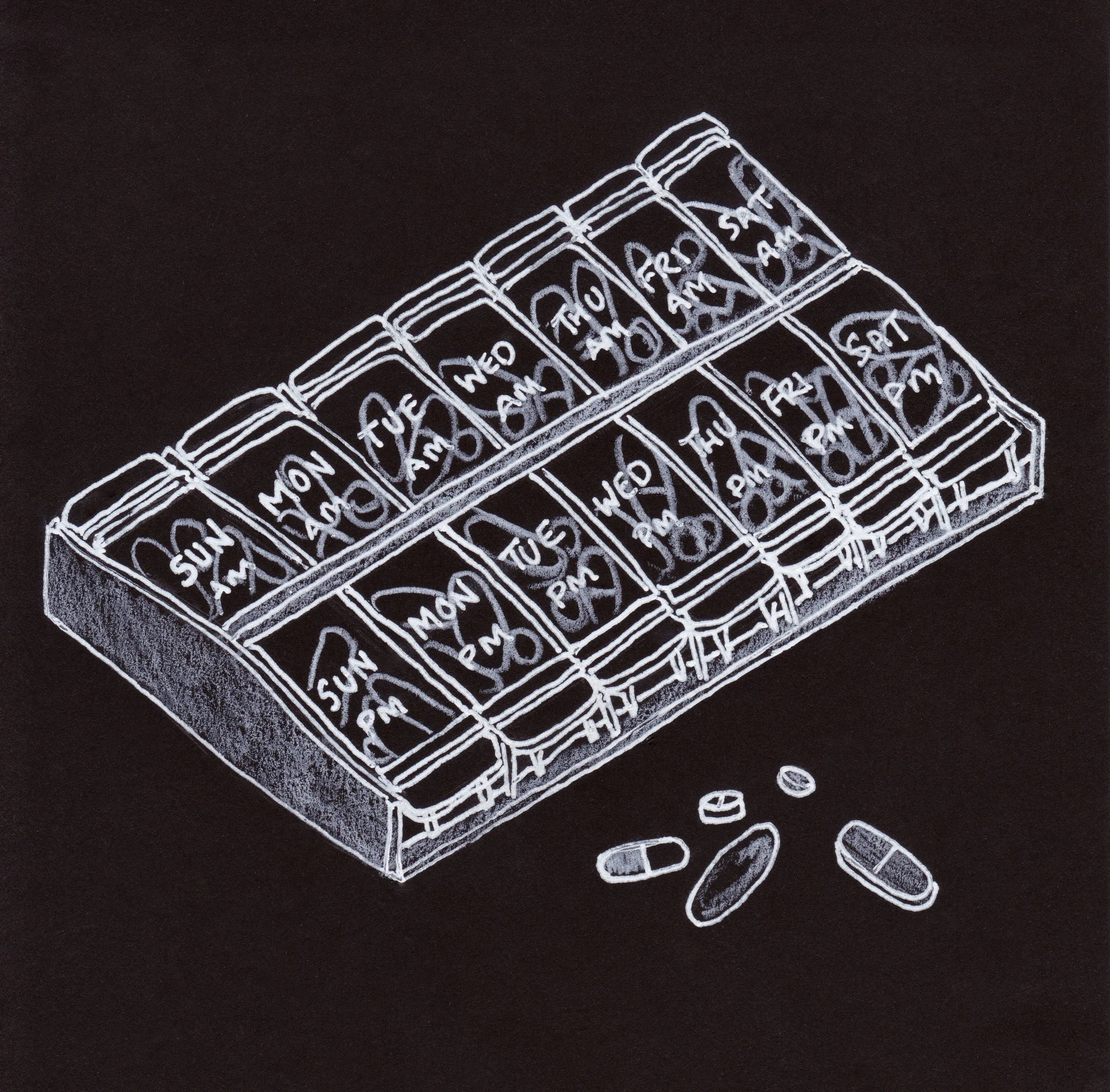
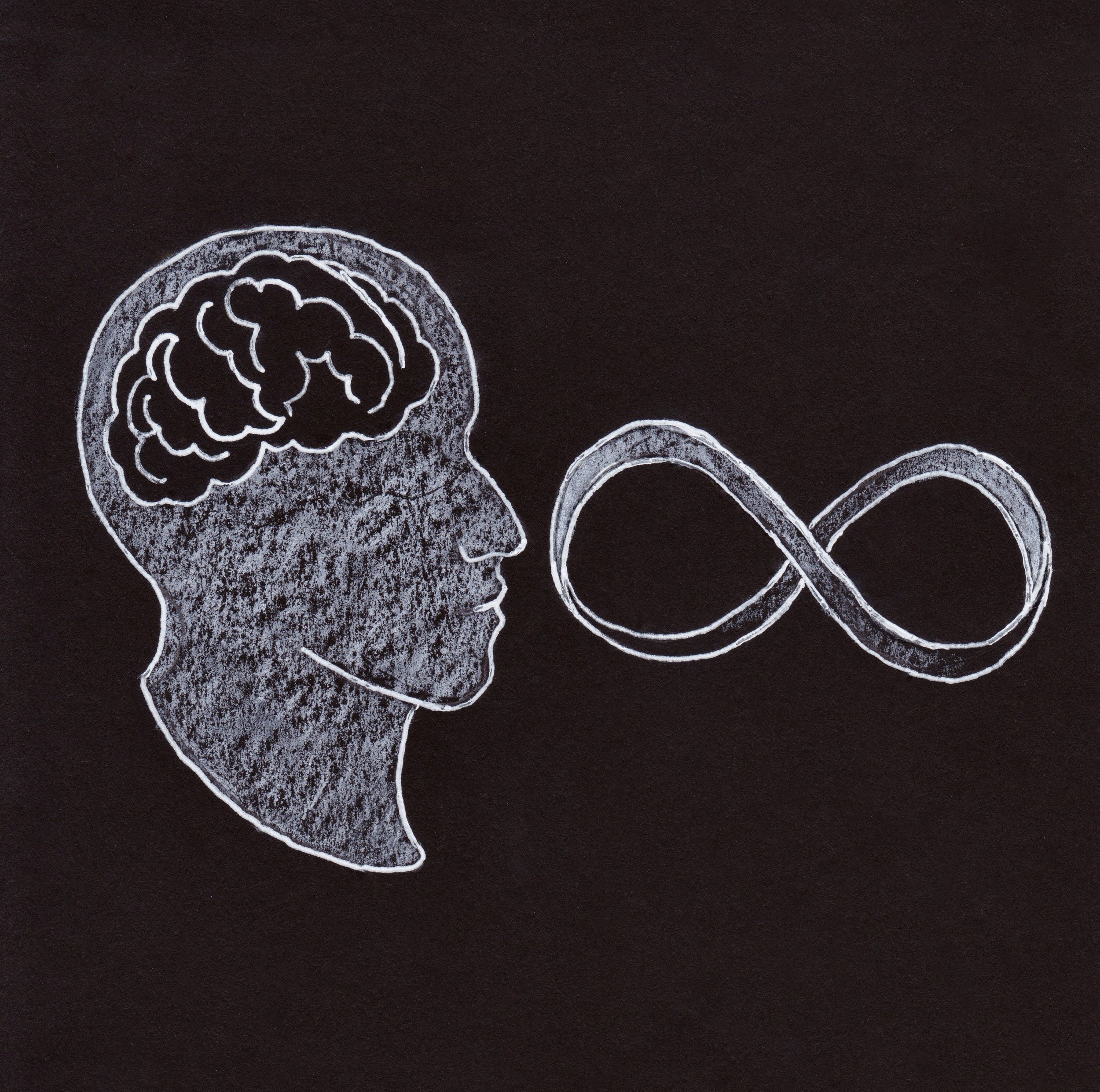
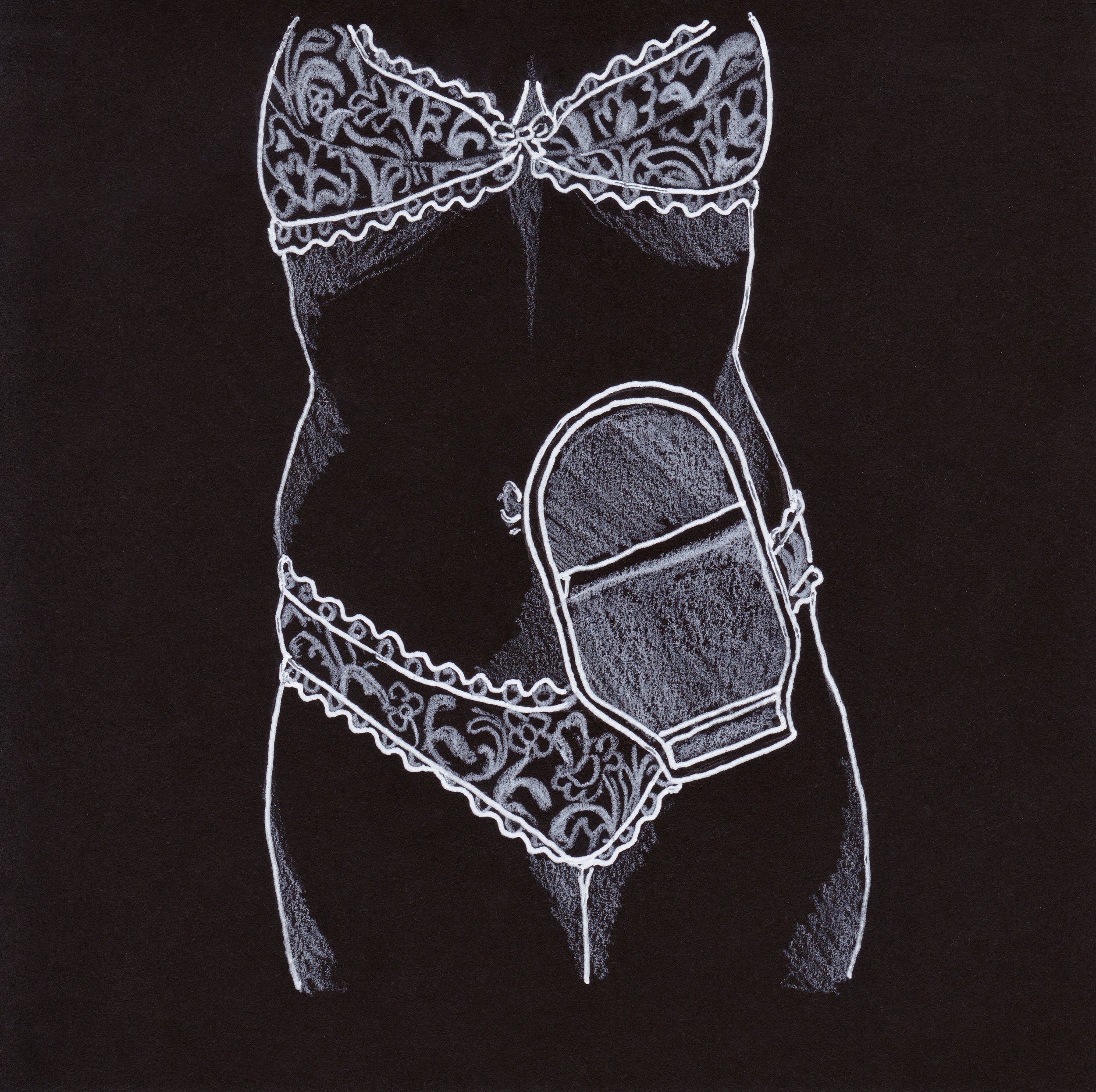
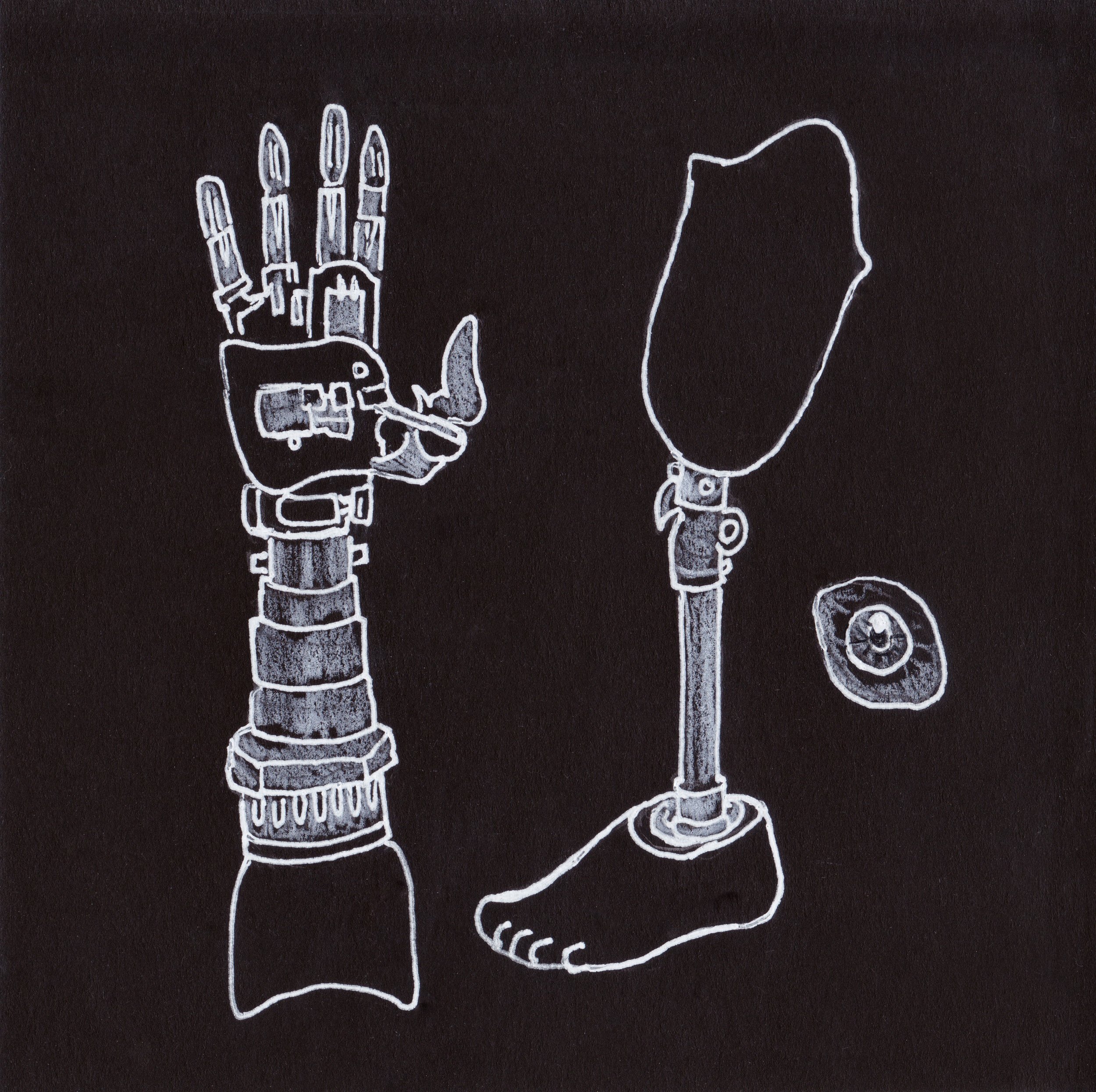
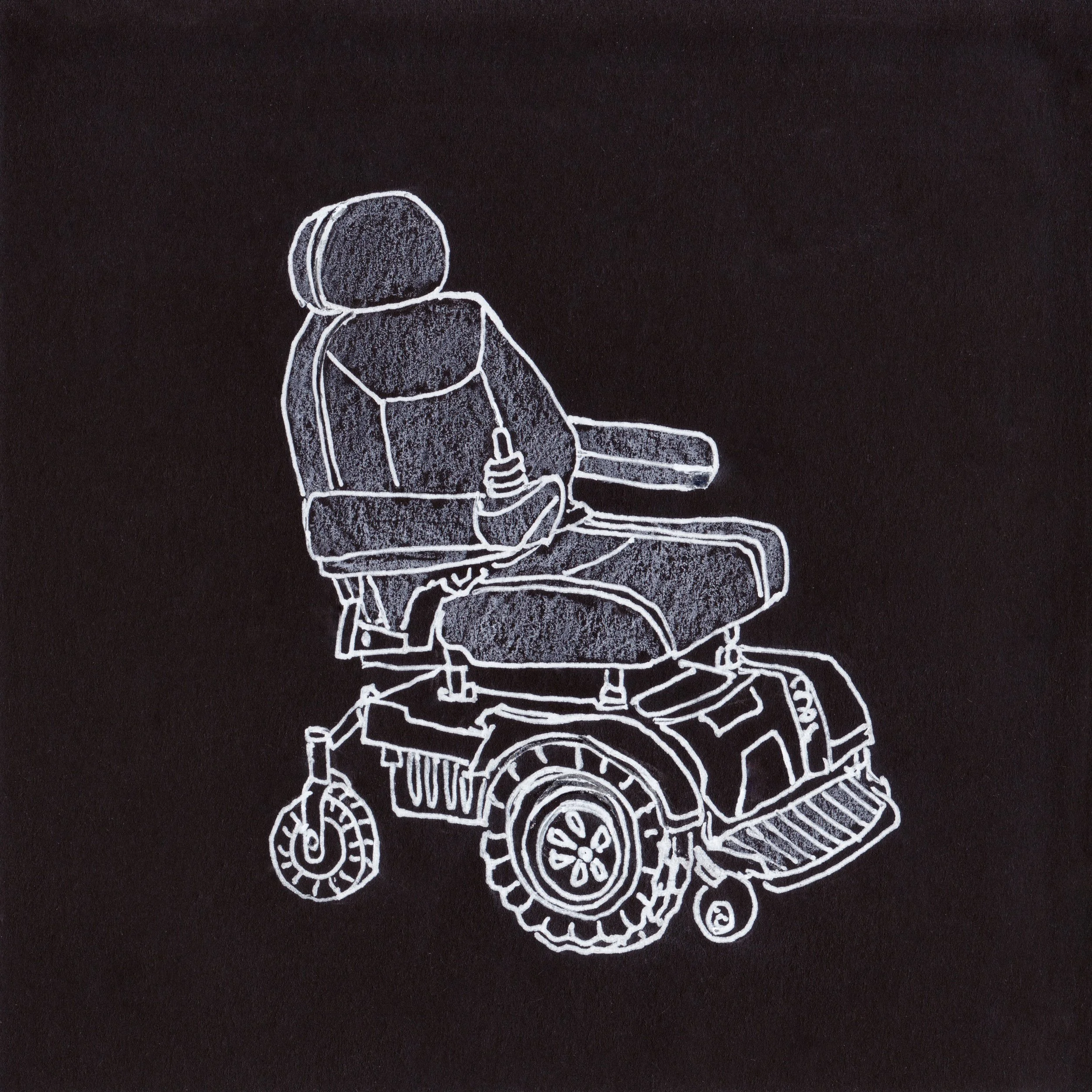

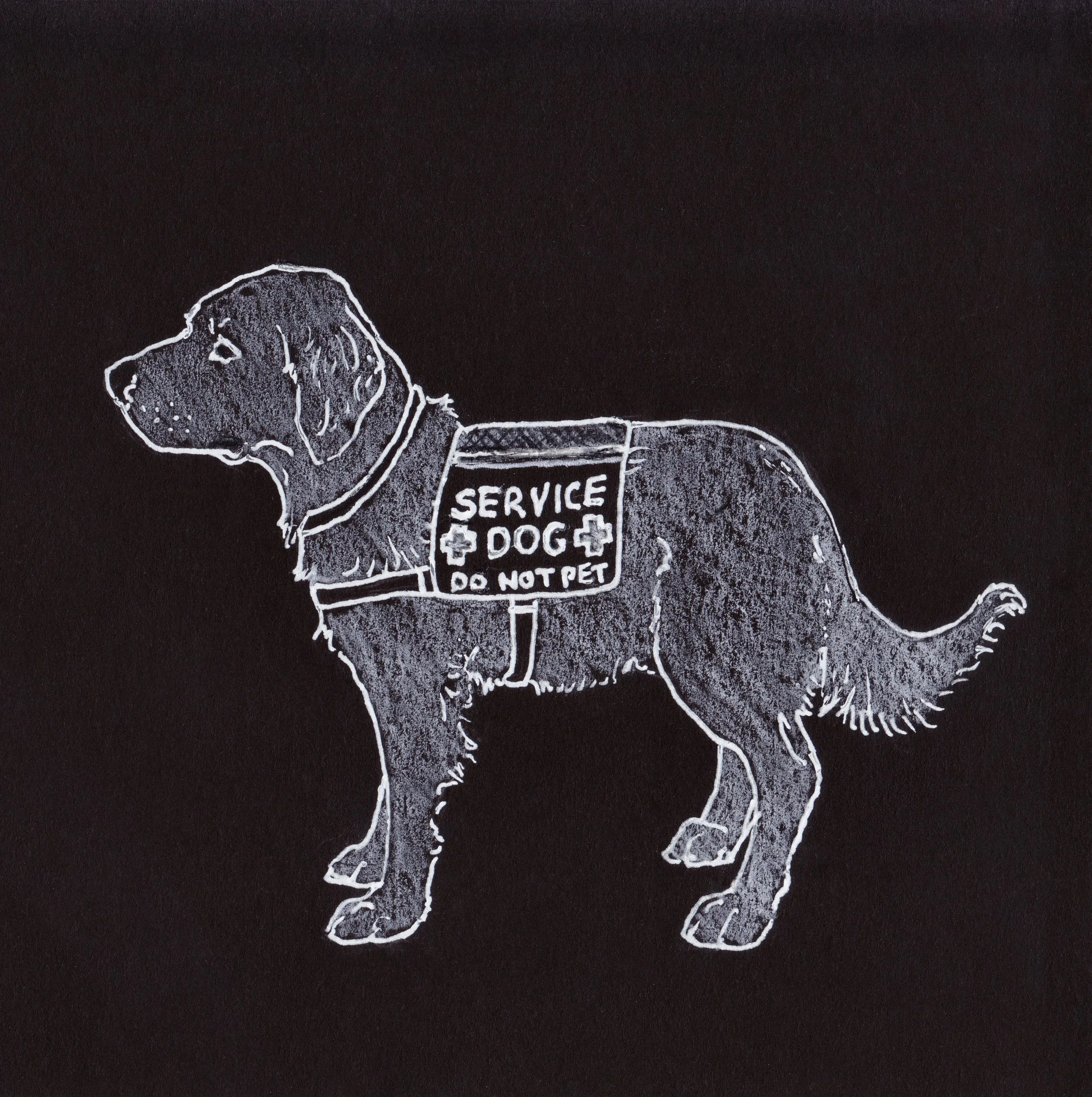
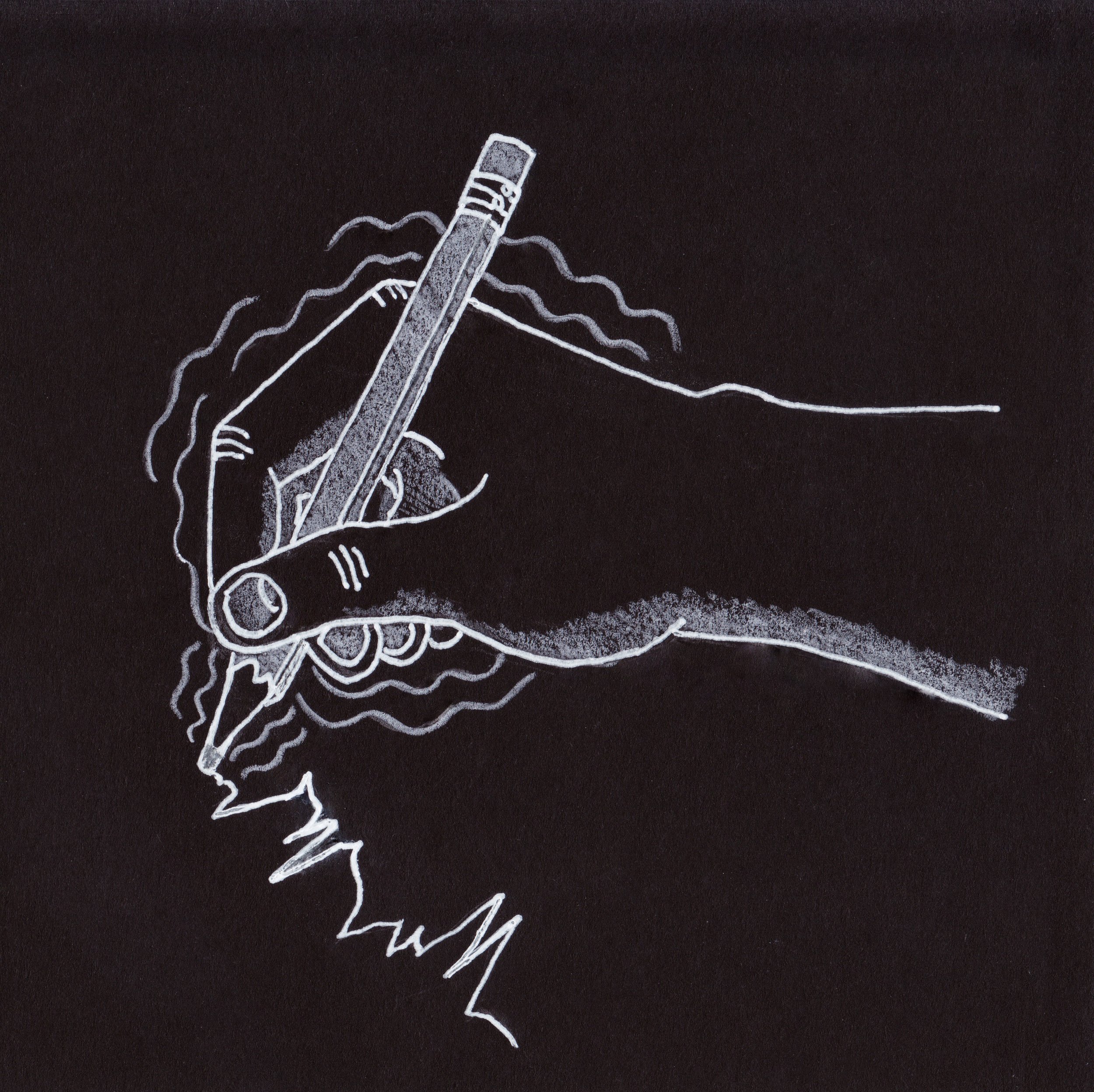
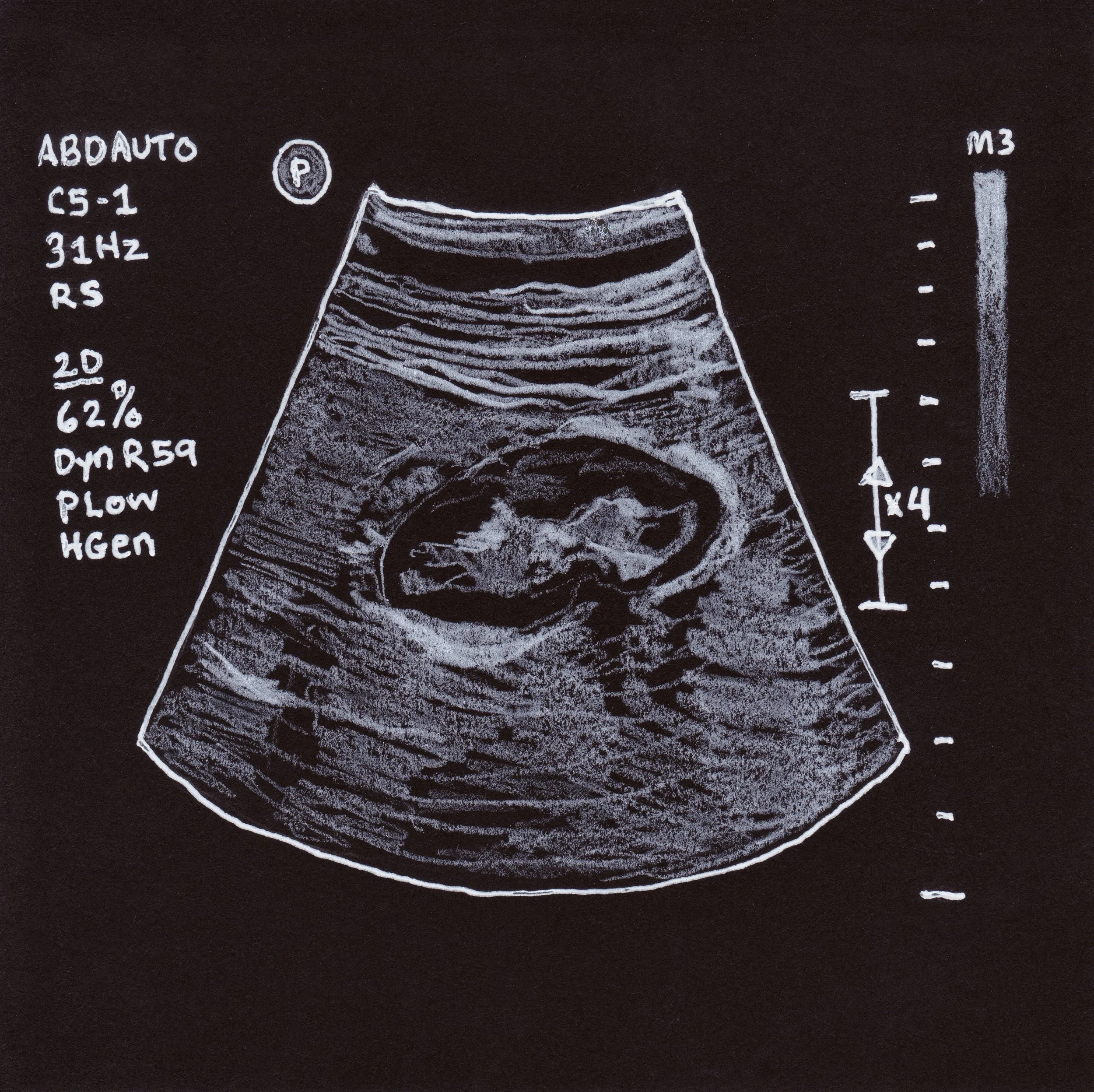
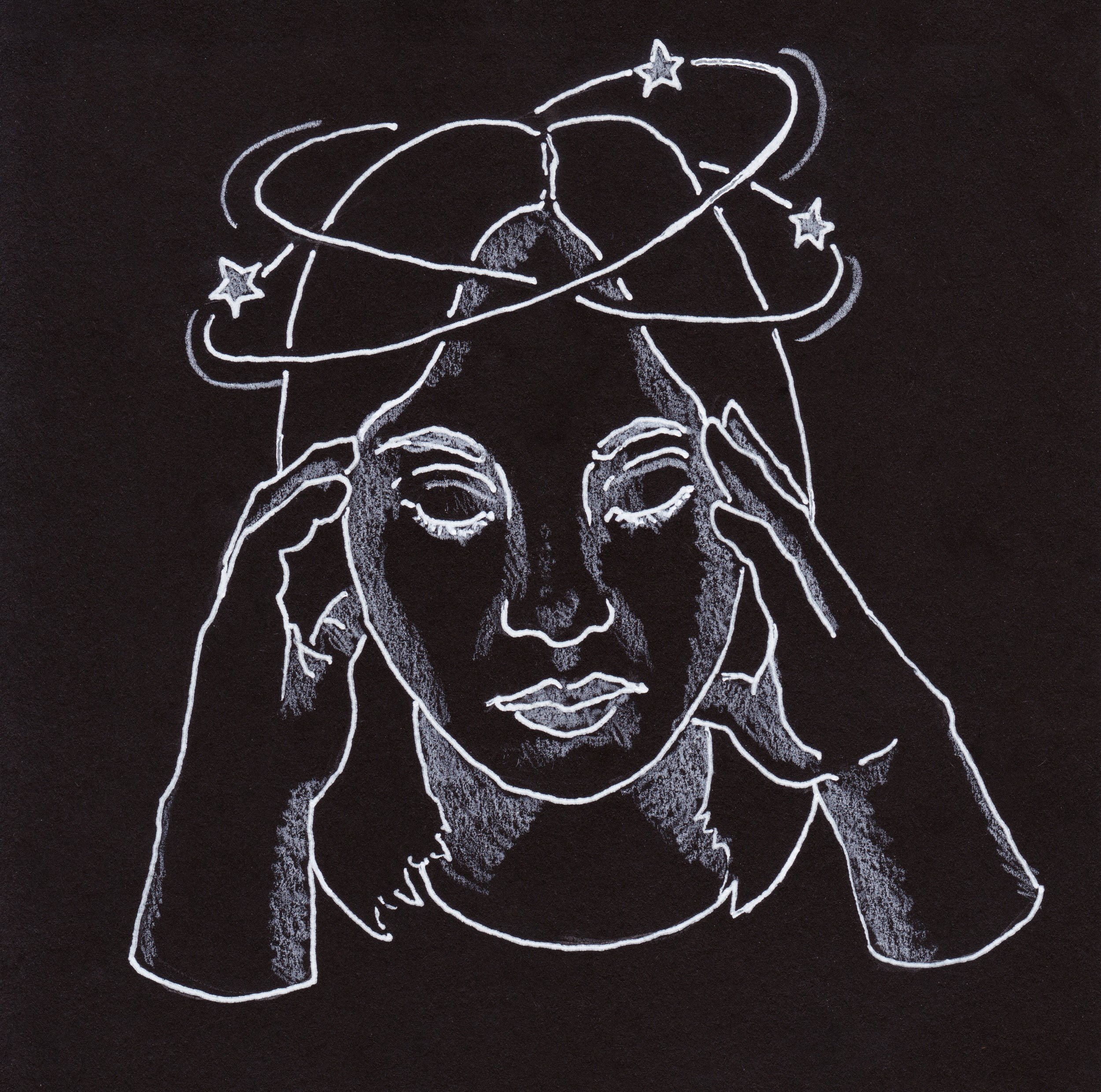
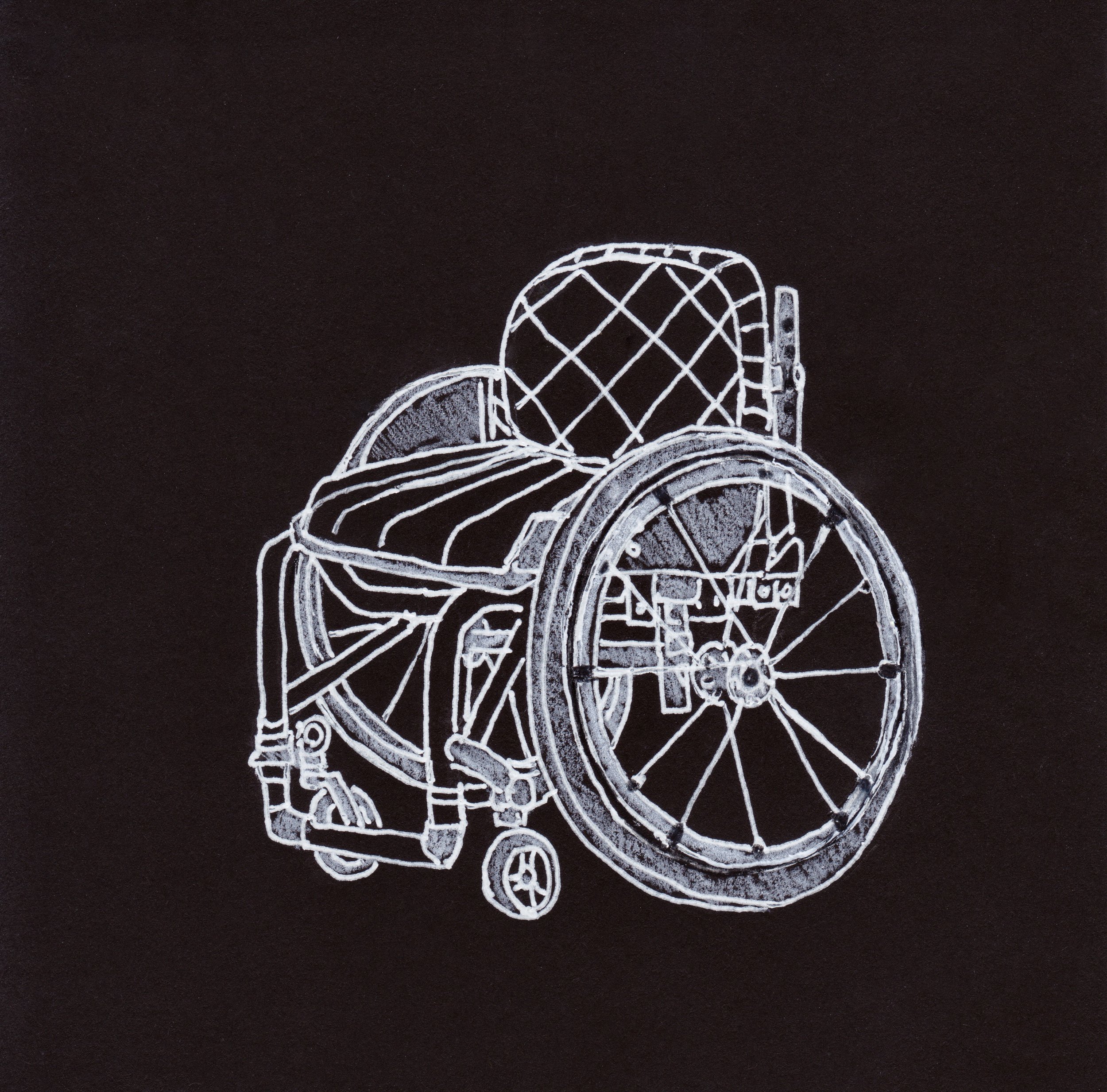

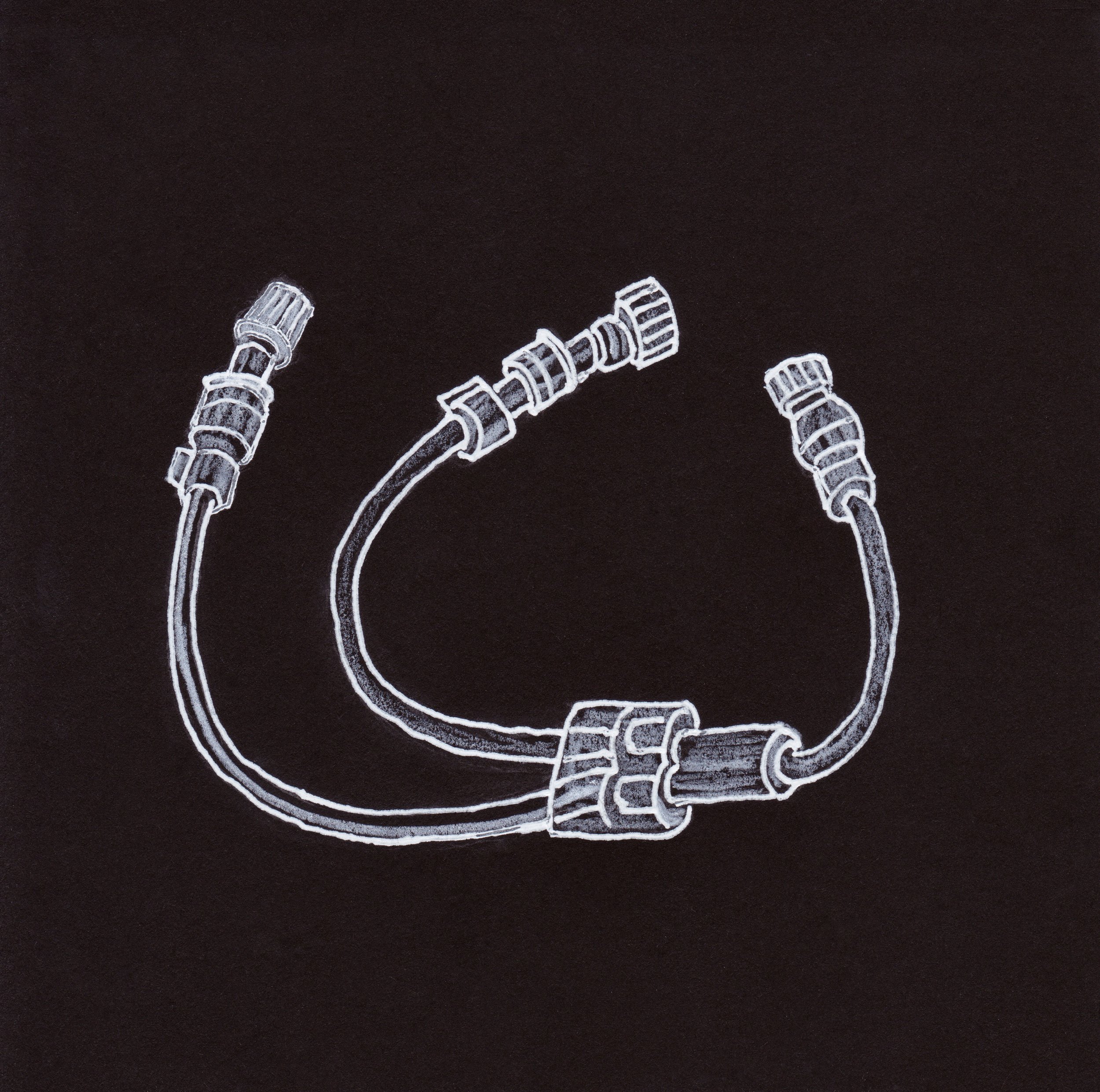
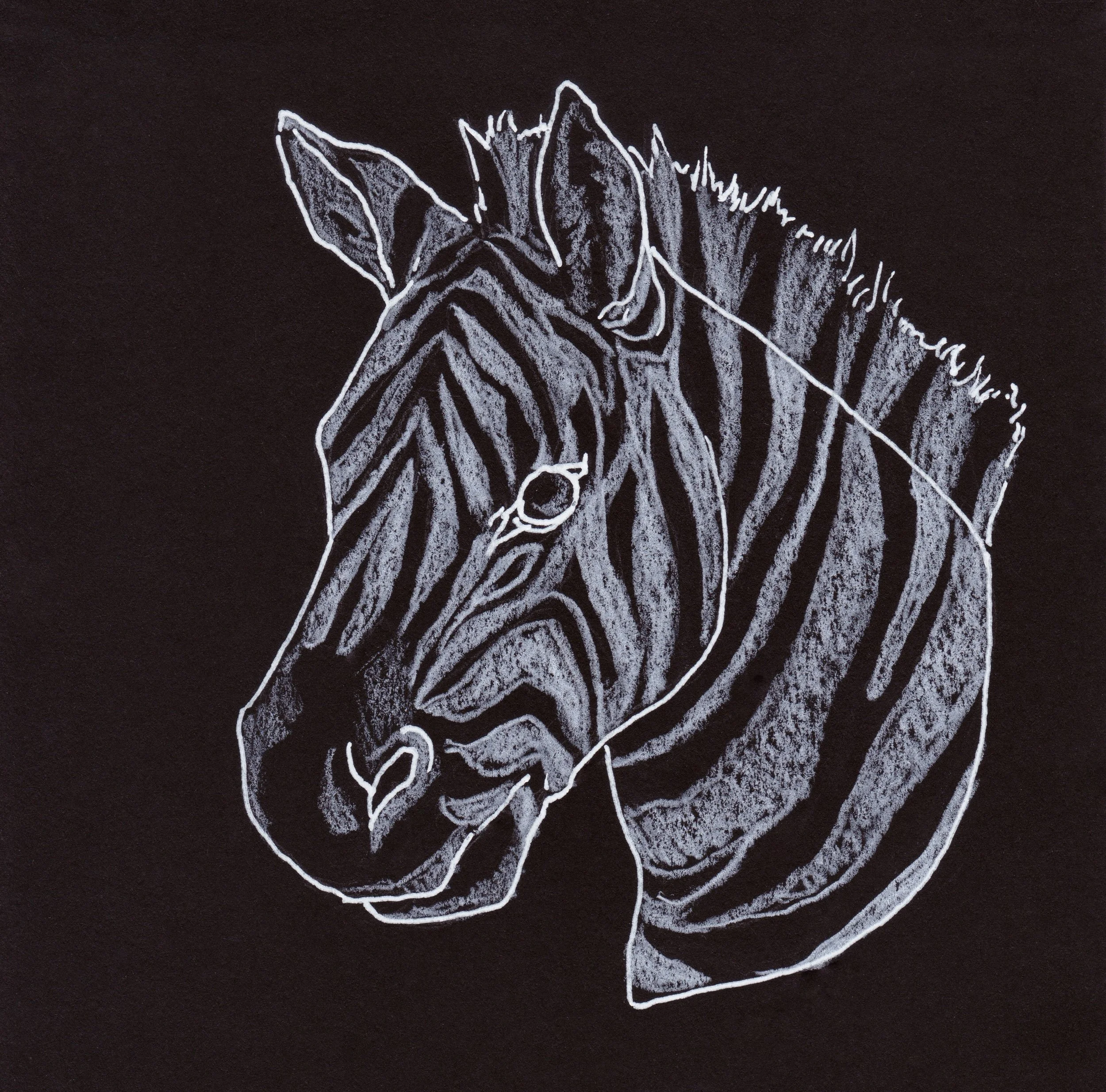
“A is for ASL” ink and pencil on paper 6”x6”
ASL, or American Sign Language, is the most common language of deaf and hard of hearing communities of the US, and involves movements of the hands and face to communicate. ASL is just one of many sign languages used around the world, and each have their own structures and pronunciations, just like any other language.
“B is for Bedridden” ink and pencil on paper 6”x6”
Countless conditions and disabilities can render someone bedridden, either temporarily during flares of symptoms, or permanently. This may require that partners and family members become caretakers, or outside medical professionals may be brought in.
“C is for Crutches” ink and pencil on paper 6”x6”
Crutches are mobility aids that assist their users in walking. Crutches are used by a variety of people, ranging from those recovering from surgeries, to those who use them long term. There are three types of crutches - underarm crutches, also known as axillary crutches, forearm crutches (featured in this drawing), and forearm support crutches, or gutter crutches.
“D is for Doctor” ink and pencil on paper 6”x6”
Many people with disabilities require regular visits to doctors and specialists throughout their lifetimes in order to treat and manage their conditions. Experiences between one doctor and another can vary greatly based on medical training and experience, and regular visits can be costly and put many into medical debt. Still, medical intervention and treatment may be essential to a patient’s quality of life and survival.
“E is for EKG” ink and pencil on paper 6”x6”
An EKG, or electrocardiogram, is a test that checks for various heart conditions by recording the heart’s electrical signal. The test involves placing small electrode patches on the chest, arms, and legs in order to gather data. This drawing in particular is of an EKG result demonstrating Long QT syndrome, which is a heart signaling disorder that can cause arrhythmias.
“F is for Fluids” ink and pencil on paper 6”x6”
IV fluid treatment may be used to treat a variety of conditions, and are especially formulated to combat dehydration and maintain electrolyte levels. They can be used for acute situations like operations, or may be an ongoing treatment option for conditions like POTS.
“G is for Glucose Monitor” ink and pencil on paper 6”x6”
Diabetics use glucose meters to measure the amount of glucose in their blood. A CGM, or constant glucose monitor, like the one I’ve drawn, uses a sensor under the skin to continuously monitor blood glucose levels. They also can share data with smart phones, or CGM data receivers with insulin delivery systems.
“H is for Heating Blanket” ink and pencil on paper 6”x6”
Heating blankets are regularly used by those who have chronic pain or fatigue, and can be used for specific areas with smaller blankets or pads, or for full-body coverage. A heating blanket’s heat can remedy aches, pains, and muscle tightness and can improve blood flow.
“I is for IV” ink and pencil on paper 6”x6”
An intravenous line (IV) is a flexible tube placed inside a vein to deliver fluids or medication into the bloodstream. IV’s are placed with a needle, and are used in a variety of contexts, including hydration, the administration of contrast, or the delivery of various treatments.
“J is for Joint Pain” ink and pencil on paper 6”x6”
J is for Joint Pain. While joint pain can become more common as one naturally ages, it is also a symptom for people who have a variety of conditions, including rheumatoid arthritis. Joint pain can range from mild to severe, and is not just limited to wrists and knees. Treatments range from NSAIDs and muscle relaxants to steroids.
“K is for Ketamine Treatments” ink and pencil on paper 6”x6”
Ketamine is a dissociative anesthetic that has been used to treat severe and treatment-resistant depression, PTSD, and pain. Under these circumstances, ketamine can be administered via an IV, injections, or even lozenges.
“L is for Lab Work” ink and pencil on paper 6”x6”
Many people, especially those with chronic illnesses, can find themselves in front of phlebotomists drawing blood for labs. Lab workups can provide vital data about your body, especially your organs, that can help medical practitioners make informed decisions about treatments, medications, and your healthcare as a whole.
“M is for Medication” ink and pencil on paper 6”x6”
Many people with disabilities take medications to manage their symptoms. Medications purposes can range from easing pain to assisting various systems to function, to improving mental health, and increasing mobility.
“N is for Neurodivergence” ink and pencil on paper 6”x6”
Neurodivergence refers to a variation in mental, neurologic, and cognitive function, and can impact mental function, mood, and attention. Some of the many conditions that fall under the neurodivergent umbrella include: bipolar, dyslexia, autism, ADHD, and OCD. It’s important to recognize that just because neurodivergent functioning is different from neurotypical functioning, it does not mean that it is wrong.
“O is for Ostomy Bag” ink and pencil on paper 6”x6”
An ostomy bag is also known as a stoma bag or colostomy bag is an external pouch that is used collect and dispose of waste from the body. People with conditions that impact their colon or large intestine, including those with Chron’s disease, ulcerative colitis, diverticulitis, or certain cancers may have an ostomy bag placed after a procedure called a colostomy. For many, this is a life-saving procedure that can give patients a new lease on life.
“P is for Prosthetic” ink and pencil on paper 6”x6”
A prosthetic is an artificial device that acts as a substitute for a part of a body that may be missing through situations ranging from a birth defect to an illness to an accident. These devices go beyond just prosthetic arms and legs, and include artificial hearts, glass eyes, implants, and even dentures.
“Q is for Quadriplegia” ink and pencil on paper 6”x6”
Quadriplegia refers to a condition of paralysis from the neck down, including the torso, arms, and legs. This condition can be caused by birth defect, disease, or an injury to the spinal cord. Because of limb movement limitations, some quadriplegics utilize the use of power wheelchairs, which can have a variety of alternate ways of being driven and controlled, suited to each individual’s needs.
“R is for Rollator” ink and pencil on paper 6”x6”
Rollators are mobility aids that are used by people with disabilities (or those recovering from surgeries) who experience fatigue, or require assistance walking. There are a variety of styles and models of rollators, but the major commonalities are that, unlike walkers, rollators have four wheels, and a seat, so that their users may take breaks and rest while walking. Some rollators even have features that allow another person to push the rollator user while seated, opening up possibilities of longer outings.
“S is for Service Dog” ink and pencil on paper 6”x6”
Service dogs are dogs specifically trained to assist their disabled handlers. There are many different types of service dogs, including guide dogs, mobility dogs, medical alert dogs, and psychiatric service dogs. Service dogs provide tasks that assist their handlers in living their daily lives, and can do things such as assist with daily chores, alert to blood sugar changes, offer deep pressure therapy, and assist their handlers in moving around
“T is for Tremors” ink and pencil on paper 6”x6”
Tremors can be a symptom of various medications and conditions that involve involuntary rhythmic shaking of various parts of your body, difficulty writing and grasping utensils, and sometimes a shaky voice. Some of the most common reasons for having a tremor can be Parkinson’s or a stroke, recovering from alcohol abuse, panic attacks, or medications that have tremors as a listed side effect like lithium and asthma meds.
“U is for Ultrasound” ink and pencil on paper 6”x6”
Ultrasounds are safe, noninvasive procedures that utilize sound waves to create pictures of the internal body. They can be used for a variety of reasons, including to diagnose pain and infection in internal organs, to investigate the brain, hips and spine, and to aid in biopsies.
“V is for Vertigo” ink and pencil on paper 6”x6”
Vertigo is a symptom best described as having the feeling that your surroundings are spinning or tilting, and can lead to the inability to balance entirely. Vertigo is most often caused by an inner ear problem, but can also be caused by medications, migraines, and head injuries, and can be accompanied by symptoms like headache and nausea.
“W is for Wheelchair” ink and pencil on paper 6”x6”
A wheelchair is a four wheeled device with a seat used by an individual in need of a mobility device to navigate their world. Wheelchairs can range from being self propelled to power-driven, and are deeply customizable to their users’ needs - they can even be designed to allow for their users to play sports. For many, wheelchairs are a source of immense freedom.
“X is for X-Ray” ink and pencil on paper 6”x6”
An X-ray is a procedure that uses invisible electromagnetic energy beams to take images of your internal structures, such as your tissues and bones. X-Rays are mainly used to assess bone injuries or to diagnose tumors, but can also be used for other procedures such as fluroscopies or ones requiring contrast.
“Y is for Y-Set” ink and pencil on paper 6”x6”
In intravenous therapy, a Y-Set is a 3-way connector used for delivering medications and fluids simultaneously from various sources. This connector allows for what medical technicians refer to as “piggybacking,” and allows for multiple medications to be administered without an additional line, and is especially helpful for patients that require multiple medications.
“Z is for Zebra” ink and pencil on paper 6”x6”
A zebra is the symbol of the Ehlers Danlos Society, and refers to a phrase that has been circulated in the medical fields that goes “When you hear hoofbeats behind you, don’t expect to see a zebra.” This phrase encourages medical professionals to look for more common place diagnoses (horses) before a zebra (something uncommon). Zebras refer to people who have more uncommon conditions like Ehlers Danlos syndrome, and also refers to the fact that no two zebras have identical stripes, meaning each patient with EDS has a unique medical situation.

